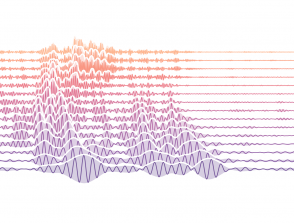Whole Mantle Shear Wave Attenuation and the Lithosphere–Asthenosphere System from Global Seismic Observations
08/10/2025
IPGP - Îlot Cuvier
15:00
Séminaires de Sismologie
Salle 310
Shuyang Sun
University Claude Bernard Lyon 1 (CNRS)
Participer à la réunion Zoom
https://cnrs.zoom.us/j/92456827714?pwd=aAbYoanbzIGTwmvpH2bDP577EyhTGb.1
ID de réunion: 924 5682 7714
Code secret: c7kG7N
The Earth is not purely elastic causing energy dissipation as seismic waves travel
through the Earth’s interior. This dissipation is measured in terms of quality factor Q.
Q is crucial for the understanding of the thermal and compositional structure of the
Earth. However, extracting attenuation information from seismic waves is highly
challenging, and compared to seismic velocity models, the development of global Q
models has lagged far behind. We build 1D (QL1D) and 3D (QL3D) whole mantle
models of body wave shear attenuation using a large dataset of various S wave
measurements. 1) QL1D, for the first time, reveals a distinct high-attenuation layer at
~1000 km depth in the lower mantle, potentially linked to a low-viscosity zone that
favors plume accumulation. 2) QL3D shows strong attenuation in the LLSVPs
beneath both the Pacific and Africa, agreeing well with low velocity.
The asthenosphere plays a fundamental role in supporting plate motion and driving
mantle convection, yet its global structure and origin remain poorly understood.
QL1D also confirm the existence of the high-attenuation zone in the asthenosphere,
reflecting elevated temperatures and potential partial melt. The termination of the
melt zone likely forms sharp seismic discontinuities both at the top and base of the
asthenosphere, namely the LAB (lithosphere–asthenosphere boundary) and the 220-
km (or Lehmann) discontinuity. Twelve years of SS precursors reflected off the two
interfaces are processed to investigate the global structure the asthenosphere. 1) The
LAB lies at ~120 km depth beneath the global oceans with a∼12.5% velocity drop,
consistent with 1.5–2% partial melt, and shows no dependence on seafloor age,
supporting a constant-thickness oceanic plate. 2) The 220-km discontinuity is a global
interface at ~250 km depth with no significant difference in depth or velocity contrast
between oceanic and continental regions, suggesting secular cooling has minimum
impact on the base of the asthenosphere.





